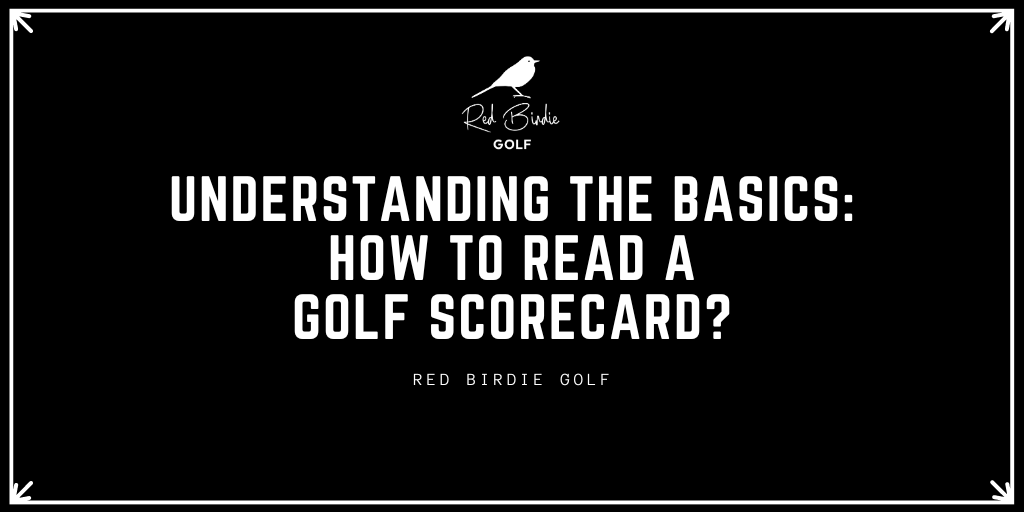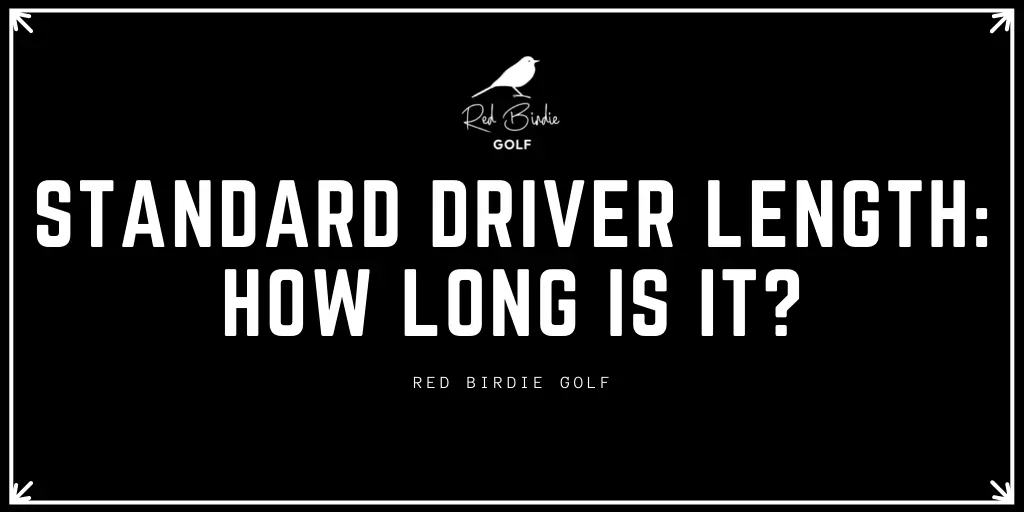Golf is a sport that is often associated with elegance, precision, and a sense of calm. However, there are times when unexpected events occur, leading to a player’s withdrawal from a tournament or competition. This is where the abbreviation “WD” comes into play. But what exactly does WD mean in golf? In this blog post, we will unravel the mystery behind WD, exploring its impact, reasons, and strategies to avoid it.
Understanding golf terminology is crucial for both avid golfers and enthusiasts who follow the sport. WD stands for “withdrawal” in golf, indicating a player’s decision to withdraw from a tournament or competition before its completion. It is important to grasp the significance of this term, as it can have far-reaching consequences for both the golfer and the tournament itself.
In this post, we will delve into the origins and common usage of WD in golf, shedding light on its interpretation within the golfing community. Additionally, we will explore the reasons behind a golfer’s decision to withdraw, including injury-related WDs, illnesses affecting performance, and other unforeseen factors. By understanding these reasons, we can gain insight into the challenges faced by golfers and the steps they take to prevent WDs.
The consequences of a WD extend beyond the individual golfer. We will examine the impact on the golfer’s emotional and psychological well-being, as well as the challenges faced in their journey to overcome setbacks caused by WDs. Furthermore, we will explore the effects of a WD on the tournament or competition, including the rules and regulations surrounding WDs, the repercussions for the organizers, and the effect on other players and their strategies.
To avoid WDs, golfers employ various strategies and precautions. We will discuss the importance of physical preparation and fitness routines, including warm-up exercises, strength and conditioning training, and proper nutrition and hydration. Mental preparation and stress management techniques will also be explored, highlighting practices like mindfulness, visualization, and coping mechanisms for handling pressure on the course. In addition, we will delve into the significance of equipment maintenance and contingency plans to ensure a seamless golfing experience.
In conclusion, understanding what WD means in golf is vital for both players and enthusiasts. It sheds light on the challenges faced by golfers, the impact on tournaments, and the strategies to avoid WDs. By applying preventive measures such as physical and mental preparation, as well as equipment maintenance, golfers can minimize the risk of having to withdraw from a tournament. Let us unravel the mystery of WD in golf and ensure a smoother, more enjoyable experience for all involved.
Understanding the WD Abbreviation in Golf
The world of golf has its own unique jargon and abbreviations that can sometimes leave newcomers scratching their heads in confusion. One such abbreviation that often pops up in golf discussions and tournament results is WD. So, what does WD mean in golf? In this section, we will delve into the definition and origins of WD, its common usage and interpretation, as well as its significance in golf tournaments and competitions.
WD, in the context of golf, stands for “withdrawal.” When a golfer decides to withdraw from a tournament or competition before its completion, they are marked with the WD abbreviation. It serves as an official acknowledgment of their departure from the event. While WD may seem like a simple and straightforward abbreviation, its implications go beyond a mere exit from the competition.
The usage of WD in golf has become standardized over the years, and it is universally understood within the golfing community. When a player WDs from a tournament, it signifies that they are voluntarily opting out for various reasons, such as injury, illness, personal issues, or technical difficulties. Understanding the context and reasons behind a WD is crucial to grasp the impact it can have on both the individual golfer and the tournament itself.
In golf tournaments and competitions, WDs are not uncommon, and they can occur at any stage of the event. Whether it is a major championship or a local club tournament, unforeseen circumstances can arise that may force a golfer to withdraw from the competition. These circumstances can range from physical injuries and illnesses to personal emergencies or even technical issues with equipment.
When a golfer sustains an injury that affects their ability to play at their best, a WD becomes a necessary choice. Common golf-related injuries such as back strains, wrist injuries, or shoulder problems can hamper a golfer’s swing, impact their performance, and potentially worsen the injury if they continue playing. In such cases, the golfer’s health and well-being take precedence over their participation in the tournament.
Similarly, illnesses can also lead to WDs in golf. A golfer may fall ill with flu-like symptoms, suffer from a viral infection, or face other health issues that hinder their ability to compete at their usual level. In these situations, playing through the illness would not only be detrimental to the golfer’s performance but could also pose a risk to their fellow competitors.
Aside from injuries and illnesses, personal reasons can also necessitate a WD from a golf tournament. Family emergencies, unforeseen commitments, or other pressing matters may arise, forcing a golfer to withdraw to attend to more important matters. While these reasons may not be directly related to the sport itself, they highlight the importance of a golfer’s personal life and responsibilities.
Technical difficulties with equipment can also be a reason for a WD in golf. If a golfer’s primary club or equipment malfunctions during a tournament, making it impossible to continue playing, they may have no choice but to withdraw. While golfers generally have backup equipment available, certain situations may arise where immediate repairs or replacements are not feasible, leading to a WD.
In conclusion, understanding the meaning of WD in golf is crucial for any golf enthusiast or participant. WD, which stands for “withdrawal,” signifies a golfer’s voluntary exit from a tournament or competition before its completion. Whether it is due to injuries, illnesses, personal reasons, or technical difficulties, a WD has significant implications for both the individual golfer and the overall event. By comprehending the reasons behind WDs, we can gain insight into the challenges faced by golfers and the steps taken to prevent or navigate through such situations.
Reasons for a WD in Golf
Injury-related WDs in golf
Injuries are a common occurrence in any physical sport, and golf is no exception. The repetitive nature of the golf swing, coupled with the intensity of practice and competition, can put strain on a golfer’s body, making them susceptible to various injuries. When these injuries significantly impact a golfer’s ability to play, a WD becomes a necessary choice.
One of the most common injuries in golf is back pain. The rotational forces exerted on the spine during the swing can lead to strains, herniated discs, or other back-related issues. These injuries can severely limit a golfer’s mobility and affect their ability to generate power and accuracy in their shots. In such cases, withdrawing from a tournament is a prudent decision to prevent further damage and allow for proper healing.
Wrist injuries are also prevalent among golfers. The repetitive motion of the swing, coupled with the impact of striking the ball, can lead to overuse injuries, such as tendonitis or ligament sprains. These injuries can cause pain and instability in the wrist, making it challenging for golfers to maintain control and precision in their shots. To avoid exacerbating the injury and potentially causing long-term damage, a WD may be the best course of action.
Shoulder injuries can also plague golfers, particularly in the lead shoulder (left shoulder for right-handed golfers). The forceful rotation and extension of the shoulder during the swing can lead to rotator cuff tears, impingement syndrome, or other shoulder-related issues. These injuries can significantly impact a golfer’s ability to generate power and accuracy, making it difficult to compete at a high level. In such cases, a WD allows the golfer to seek proper medical attention and focus on rehabilitation.
To prevent injuries and subsequent WDs, golfers take various steps to maintain their physical well-being. Regular exercise routines that focus on flexibility, strength, and stability can help prepare the body for the demands of the golf swing. Additionally, proper warm-up exercises and stretching before playing or practicing can help reduce the risk of injury. Golfers also work closely with trainers and healthcare professionals to address any underlying physical issues and develop injury prevention strategies.
Illness-related WDs in Golf
While physical injuries are often the main culprits behind WDs in golf, illnesses can also have a significant impact on a golfer’s performance and ability to compete. From common ailments to more severe health conditions, illnesses can affect various aspects of a golfer’s game, making a WD a necessary choice.
Flu-like symptoms, such as fever, body aches, and fatigue, can greatly hinder a golfer’s ability to perform at their best. These symptoms can sap energy levels, impair concentration, and affect overall physical stamina. Golf requires focus, precision, and endurance, all of which can be compromised by the debilitating effects of an illness. In such cases, withdrawing from a tournament is a sensible decision to allow the golfer to focus on recuperation and prevent the spread of contagious illnesses to other players.
Viral infections, such as colds or respiratory infections, can also impact a golfer’s ability to compete. Nasal congestion, coughing, and sneezing can disrupt a golfer’s breathing rhythm and concentration, leading to inconsistent swings and reduced performance. Additionally, the contagious nature of these infections poses a risk to other players, making a WD a responsible choice to prevent the spread of illnesses within the golfing community.
Golfers may also face more severe health conditions that require them to withdraw from tournaments. Chronic illnesses, such as asthma, diabetes, or autoimmune disorders, can present challenges on the golf course. Managing these conditions during a tournament may require constant monitoring, medication adjustments, or medical interventions that can disrupt a golfer’s focus and performance. In such cases, a WD allows the golfer to prioritize their health and well-being.
To minimize the risk of illness-related WDs, golfers adopt various precautionary measures to maintain their health. Proper nutrition and hydration play a vital role in supporting the immune system and overall well-being. A balanced diet rich in fruits, vegetables, lean proteins, and whole grains provides essential nutrients to support the body’s immune response. Staying hydrated throughout the round helps ensure optimal performance and reduces the risk of dehydration-related complications.
Golfers also prioritize rest and recovery to bolster their immune system and prevent illnesses. Sufficient sleep is essential for overall health and plays a crucial role in immune function. By getting an adequate amount of restful sleep, golfers can enhance their body’s ability to fight off infections and recover from physical exertion.
Additionally, practicing good hygiene, such as regular handwashing and avoiding close contact with individuals who are sick, can help reduce the risk of contracting and spreading illnesses. Golfers may also consider getting vaccinated against common viruses, such as the flu, to further protect themselves and others during the season.
In conclusion, illnesses can have a significant impact on a golfer’s ability to compete at their best. Flu-like symptoms, viral infections, and chronic health conditions can hinder performance, impair concentration, and pose risks to other players. By prioritizing their health, adopting preventive measures, and making responsible decisions, golfers can minimize the likelihood of illness-related WDs and ensure a safer and more enjoyable golfing experience for all.
Other Factors Leading to WDs in Golf
While injuries and illnesses are common causes of WDs in golf, there are other factors that can unexpectedly force a player to withdraw from a tournament. These factors may not be directly related to the golfer’s physical or mental well-being, but they can still have a significant impact on their ability to participate.
Personal reasons can play a role in a golfer’s decision to withdraw from a tournament. Family emergencies, such as the illness or injury of a loved one, can understandably take precedence over a golf competition. In such cases, the golfer may need to prioritize their presence and support for their family, leading to a WD. Personal commitments or unexpected events that require immediate attention can also arise, making it impossible for the golfer to continue playing. While these reasons may not be within the golfer’s control, they highlight the importance of understanding that life events can sometimes take precedence over the sport.
Technical difficulties with equipment can also lead to WDs in golf. Golfers rely heavily on their clubs, balls, and other equipment to perform at their best. In situations where a golfer’s primary club or equipment malfunctions or becomes damaged during a tournament, it may be impractical or impossible to continue playing without a replacement. While golfers typically have backup equipment available, certain circumstances may arise where immediate repairs or replacements are not feasible. In these cases, a WD becomes the only viable option.
Weather conditions can also play a significant role in a golfer’s decision to withdraw from a tournament. Extreme weather events, such as lightning storms, heavy rain, or strong winds, can pose a risk to the safety of both the players and the spectators. Tournament organizers prioritize the well-being of all participants and may suspend or cancel play due to hazardous weather conditions. In such situations, golfers may be forced to withdraw as a result of the tournament’s decision.
To minimize the risk of WDs due to personal reasons, golfers often maintain open lines of communication with tournament organizers and have contingency plans in place. This allows for effective communication in the event of unforeseen circumstances, enabling quick decision-making and potential reentry into future tournaments.
To mitigate the impact of technical difficulties with equipment, golfers take precautions such as regular equipment checks and maintenance. Golfers often work closely with equipment experts to ensure that their clubs are in optimal condition and have backup options available in case of emergencies. By staying proactive and prepared, golfers can minimize the likelihood of equipment-related WDs.
While weather conditions are beyond the control of golfers, they can stay informed and adapt to changing circumstances. By closely monitoring weather forecasts and staying in communication with tournament officials, golfers can be prepared for any potential disruptions caused by inclement weather. This allows for better decision-making and minimizes the need for WDs due to weather-related safety concerns.
In conclusion, WDs in golf can occur due to a variety of factors beyond injuries and illnesses. Personal reasons, technical difficulties with equipment, and adverse weather conditions can all force a golfer to withdraw from a tournament. By maintaining effective communication, being proactive in equipment maintenance, and staying informed about weather conditions, golfers can minimize the likelihood of WDs due to these unforeseen factors.
Consequences of a WD in Golf
A withdrawal (WD) from a golf tournament can have significant consequences, both for the golfer who withdraws and for the overall tournament or competition. In this section, we will explore the impact of a WD on the golfer’s emotional and psychological well-being, as well as the challenges they may face in the aftermath. Additionally, we will examine the consequences of a WD on the tournament, including the rules and regulations surrounding WDs, the repercussions for the organizers, and the effect on other players and their strategies.
Impact on the Golfer
A WD from a golf tournament can have profound effects on the golfer’s emotional and psychological state. Golfers invest a tremendous amount of time, effort, and dedication into their game, and a WD can feel like a personal setback. Feelings of disappointment, frustration, and even guilt may arise, as the golfer may feel that they have let themselves, their supporters, or their team down.
The psychological impact of a WD can also extend beyond the tournament itself. Golfers may question their abilities, experience self-doubt, or struggle with confidence issues following a WD. It can be challenging to bounce back from a withdrawal, as the golfer may fear similar circumstances occurring in future tournaments or worry about their reputation within the golfing community.
However, it is important for golfers to remember that WDs are sometimes necessary for their well-being. Prioritizing physical health, addressing personal emergencies, or ensuring equipment safety are valid reasons to withdraw. By acknowledging and accepting these reasons, golfers can navigate the emotional impact of a WD and focus on their future in the sport.
Impact on the Tournament or Competition
A WD from a tournament or competition can have several consequences for the event itself. Tournament rules and regulations typically outline the procedures and penalties associated with WDs. These rules aim to maintain fairness and integrity while ensuring the smooth running of the tournament.
For example, some tournaments impose penalties, such as fines or suspensions, for unnecessary or untimely WDs. These penalties serve as deterrents against players withdrawing without valid reasons or at the last minute, which can disrupt the tournament schedule and affect other players.
The withdrawal of a prominent player can also have an impact on the overall excitement and atmosphere of the tournament. Fans who were anticipating watching a particular golfer compete may be disappointed by their absence. Additionally, the absence of a strong contender can alter the dynamics of the tournament, potentially affecting the strategies and performance of other players.
Furthermore, the organizers of the tournament may face logistical challenges as a result of a WD. They need to adjust tee times, update leaderboards, and communicate any changes to spectators and other participants. These adjustments can be time-consuming and require additional coordination and resources.
In conclusion, a WD in golf has consequences that extend beyond the individual golfer. The emotional and psychological impact on the golfer should not be underestimated, as they may grapple with feelings of disappointment and self-doubt. However, it is essential for golfers to prioritize their well-being and accept that WDs are sometimes necessary. From a tournament perspective, WDs can lead to rule enforcement, changes in the tournament dynamics, and logistical challenges for organizers. By understanding the consequences of a WD, both on an individual and tournament level, we can appreciate the complexities of the sport and the importance of maintaining a balance between competition and well-being.
Strategies to Avoid WDs in Golf
Prevention is always better than cure, and this holds true for WDs in golf. To minimize the risk of having to withdraw from a tournament, golfers employ various strategies and precautions. In this section, we will explore the key strategies that golfers can implement to avoid WDs. These strategies encompass physical preparation and fitness routines, mental preparation and stress management techniques, as well as equipment maintenance and contingency plans.
Physical Preparation and Fitness Routines
Physical preparation plays a crucial role in minimizing the risk of WDs in golf. Golfers need to ensure that their bodies are adequately prepared for the physical demands of the game. Here are some strategies to consider:
- Warm-up exercises and stretching: Prior to teeing off, golfers should engage in a warm-up routine that includes dynamic stretches and exercises. This helps to increase blood flow, loosen up muscles, and prepare the body for the repetitive motions of the golf swing.
- Strength and conditioning training: Golfers can benefit from incorporating strength and conditioning exercises into their fitness routines. This can help improve overall body strength, stability, and flexibility, reducing the risk of injuries and optimizing performance on the course.
- Proper nutrition and hydration: A well-balanced diet and proper hydration are essential for optimal performance and recovery. Golfers should focus on consuming a variety of nutrient-rich foods, including fruits, vegetables, lean proteins, and whole grains. Staying hydrated throughout the round is also crucial to maintain energy levels and prevent fatigue.
Mental Preparation and Stress Management Techniques
The mental aspect of golf is just as important as the physical. Golfers need to develop mental resilience and effective stress management techniques to avoid WDs. Here are some strategies to consider:
- Mindfulness and meditation practices: Incorporating mindfulness and meditation into daily routines can help golfers manage stress, improve focus, and maintain a calm state of mind on the course. These practices promote mental clarity and allow golfers to stay in the present moment, enhancing their performance and reducing the likelihood of making impulsive decisions that may lead to a WD.
- Visualization techniques: Visualizing successful shots, positive outcomes, and overcoming challenges can help golfers build confidence and enhance their performance. By mentally rehearsing their shots and visualizing themselves executing them flawlessly, golfers can cultivate a positive mindset and mitigate the risk of succumbing to negative emotions or self-doubt.
- Coping mechanisms for handling pressure: Golfers often face pressure situations during tournaments. Developing coping mechanisms, such as deep breathing exercises, positive self-talk, or engaging in pre-shot routines, can help golfers manage nerves and maintain composure. By staying calm and focused under pressure, golfers can minimize the risk of making mistakes that may lead to a WD.
Equipment Maintenance and Contingency Plans
Proper equipment maintenance and having contingency plans in place can help golfers avoid WDs due to technical difficulties. Consider the following strategies:
- Regular equipment checks and maintenance: Golfers should regularly inspect their clubs, grips, and other equipment to ensure they are in optimal condition. This includes checking for any signs of wear and tear, making necessary repairs or replacements, and keeping backup equipment readily available.
- Having backup equipment on hand: It is prudent for golfers to have backup clubs, balls, and other essentials readily available in case of emergencies. This minimizes the risk of being caught off guard by equipment malfunctions and provides peace of mind during tournaments.
- Arranging for immediate repairs or replacements: In the event of equipment failure during a tournament, golfers should have a plan in place to quickly address the issue. This may involve having access to an equipment technician on-site or having arrangements to obtain immediate repairs or replacements to minimize disruptions to their play.
By implementing these strategies, golfers can significantly reduce the likelihood of WDs and enhance their overall experience on the golf course. Physical preparation, mental resilience, and equipment readiness are key components in maintaining optimal performance and avoiding setbacks that may lead to a withdrawal.








